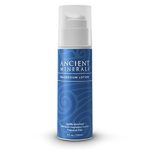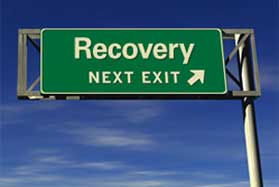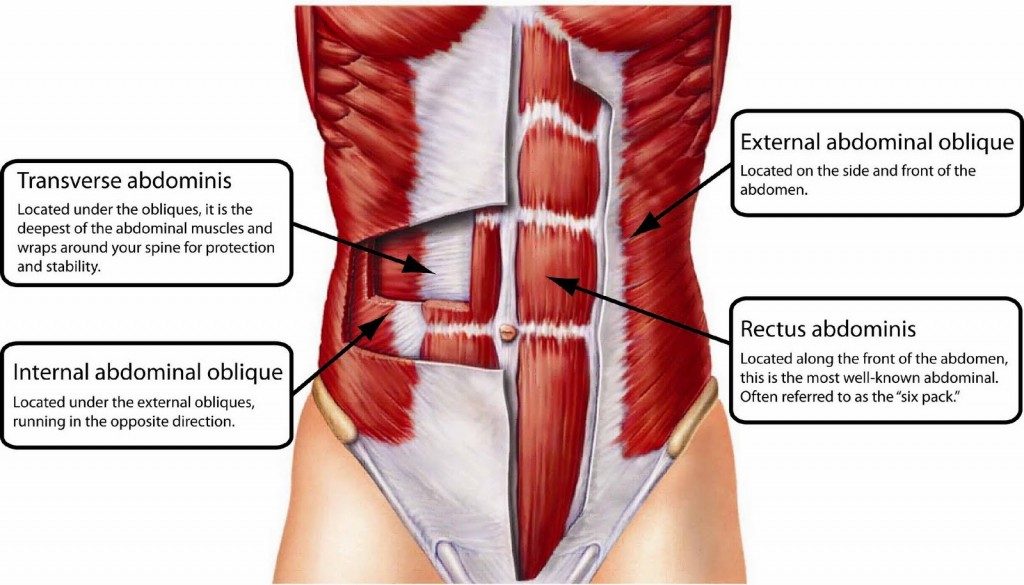Whether it’s listening to podcasts, reading books, perusing Pinterest posts or watching YouTube videos, I’m a huge consumer of health and fitness content. Often times I run across biohacking concepts and many of these ideas have become so main stream to my personal wellness and what I preach to my clients, that I forget how fringe the whole concept of biohacking can be to most people. When I was writing this blog, I went to Wikipedia for the definition of “Biohacking” and the page stated: “The article needs to be written”. Since I don’t consider myself a biohacker or gifted writer, I’ll leave that task to someone else, my goal here is to discuss some of the more common “biohacks” ; their purpose; my experience (if I’ve tried them) , and provide links for you in case you want to take a deeper dive.
Since Wikipedia let me down, I decided to take a stab at writing my own definition of biohacking. Here’s what I came up with: “The process of using lifestyle hacks, technology, science and biology to optimize your mind and body performance”.
Common BioHacks
Bulletproof Coffee
Popularized by Dave Asprey , Bulletproof Coffee is coffee blended with one to two tablespoons each of unsalted grass-fed butter and medium chain triglyceride (MCT) oil. The blending of buttery dairy into caffeine based beverages has been happening for centuries, and Dave decided to produce a coffee version after getting energized by some tea and Yak butter while hiking in Tibet. Dave Asprey’s recipe calls for his special mold free coffee and an MCT oil called Brain Octane that is designed to keep you sharp, stave off hunger, up your ketones (more on that topic later) and keep you from getting the “poopy pants” often associated with consuming too much MCT oil.

BulletProof Coffee
I’ve tried Bulletproof Coffee. It’s delicious! Blending the black coffee with the dairy and MCT oil makes a frothy, Latte like beverage. However, I noticed no measurable difference in mental clarity or satiation. I reverted back to consuming my regular coffee (I drink it with a splash of half-n-half) vs Bulletproof.
If you want to try some Bulletproof Coffee and MCT oil, here’s a link. Mr. Asprey (and I) recommend Kerrygold butter to finish the recipe. https://www.google.com/search?biw=1600&bih=770&tbm=shop&q=bulletproof+coffee+kit&oq=bulletproof+coffee+kit&gs_l=psy-ab.1.0.0.5165.5536.0.7699.3.3.0.0.0.0.230.441.1j1j1.3.0….0…1.1.64.psy-ab..0.3.440.cMdT_V7giS8#spd=15494404369160500779
Ketosis
Our bodies use ketones via our mitochondria to generate energy. They are an alternative fuel source to glucose and according to virtually every biohacker I’ve listened to, a superior source. A ketogenic diet is one that is very high in fat (75%), moderate in protein (25%) and EXTREMELY low in carbohydrates (5%). Ketosis happens when blood ketones are higher than normal either through dietary changes (which lead to very low blood glucose) or through supplementation (independent of blood glucose concentrations). Because a ketogenic diet is so restrictive, many biohackers have taken to supplementing, primarily with Beta Hydroxybuyrate or BHB, to get into Ketosis.
I’ve never worked on getting into ketosis, but intuitively I see a benefit to my body being efficient at getting its energy from either glucose or ketones. For example, I do long runs in a fasted state and have never bonked, so I’m guessing at some point my glucose stores must have been depleted and I was switching over to ketones, i.e. I think I might be fat adapted! I’m currently in the off season for running, but when I start doing long runs in the fall, I’m going to buy some ketone measuring strips to see how high my ketones are after a long run. Here’s a link if you’re interested is doing something similar.
https://www.amazon.com/Just-Fitter-Fabulous-Ketogenic-Accurately/dp/B01J9LOP4M/ref=sr_1_1_a_it?ie=UTF8&qid=1501967582&sr=8-1&keywords=ketone+test+strips
So should you follow a ketogenic diet or consume BHB? If you have cancer or a brain injury, there seems to be compelling evidence to suggest yes. (Obviously this is something that must be discussed with your health care practitioner.) There is also evidence that ketosis can be helpful for endurance athletes. However, for weight loss and general health there appears to be no real advantage and potential detriments in areas such as thyroid hormones and triglycerides.
If you want to learn more about ketosis, Dominic D’ Agostino a researcher at the University of Southern Florida, is a wonderful source. Here is his website with a link to some of his published research.
http://www.dominicdagostino.com/
Eyewear
Though blue light is prevalent in nature, we are getting an overabundance of it due to our constant exposure to TV, Phone and computer screens. In addition to causing eye strain, scientists are concerned this overexposure could lead to macular degeneration. There is also concern that blue light at night keeps you from getting a good night’s sleep. I have adopted the practice of wearing blue light blockers when the sun goes down. You can get a pair for as little as $10 on Amazon (I’m actually wearing some as I type this at 9 p.m.)

Me with Blue Light Blockers
or you can get a really cool pair through a company called Biohacked. They even have a pair you can wear during the day to keep the junk LED and fluorescent light you encounter in your office from damaging your mitochondria, which are super abundant in those eye cells! If you want to learn more about the perils of junk lighting, please check out the Biohacked website. You can conveniently purchase the glasses there too! https://biohacked.com/product/truedarktwilight/
Supplements
Let’s just say that biohackers spend a lot of money on supplements and probably have very expensive urine. Though I haven’t delved into it yet, the area of Nootropics (brain enhancing supplements) intrigues me. In addition to this, I know there is a fairly high-rate of successful folks micro dosing on hallucinogenics. As someone who dabbled with pot, coke, mushrooms and LSD in her youth, not sure how this will all play out. That said, it seems like tiny doses of LSD can’t be much worse than the Adderall and Xanax everyone is legally taking.
Here are some details on a few fringe supplements which I’ve heard about on podcasts or read about on the interweb and come up frequently on my FB or IG feeds. There are some heavy hitters behind these supplements: Nobel Prize Laureates, Doctors, etc., and they’ve gone the route of making their products supplements vs drugs to bypass FDA approval. Buyer beware.
The first is Qualia, which falls under the nootropic category, and is sometimes referred to as “The God pill”. (Great marketing.) Designed to be a whole system upgrade to your cognitive capacity, and give you drive, focus, willpower and emotional resilience. Cost is $129/month (subscription auto-ship) or $1,548.00/year Here’s the link if you want to learn more about it:
https://neurohacker.com/qualia/
The second is Elysium, which is an anti-aging supplement that works directly on Nicotinamide adenine dinucleotide (NAD) production, a precursor to mitochondria production. There are many other NAD supplements out there, but the pedigree of the people behind this one makes it interesting. I already wrote about this supplement in my blog post, https://bewellwithmel.com/healthy-aging-as-we-age/ .Cost is $40/month (subscription/auto-ship) or $480/year.
https://www.elysiumhealth.com/
Some of the biohackers I follow have endorsed these supplements, but the on-line consumer reviews are mixed. My guess is they work better for some people than others. I haven’t taken the plunge yet, but am tempted. Paying $1,500/yr for a pill that can make me perform like the character in the movie “Limitless” seems like a bargain. Here’s hoping there are no side effects!
Another, even fringier supplement, is Selective Androgen Modulators (SARMs). SARMs are chemicals that are designed to modulate the androgen receptors in the body. (Androgen receptors are the ones that testosterone attaches too.) This one is designed to “pump your body”. If you Google SARMs, you will get lots of hits on what appear to be research studies touting the benefits of SARMs.

SARMs Internet Ad
The articles basically state you get all the benefits of steroids with none of the negatives. However, most of these sites are “click-bait” that will lead you to a link to purchase SARMs. SARMs are not authorized for human use, they are being researched. This allows you to purchase them under the loophole of “lab purposes”. My advice is to proceed with caution.
As for me personally, I get all my vitamins from a German company called Thorne:
- Multivitamin: Just in case I’m missing something!
- Creatine (5 grams per day to minimize muscle loss and keep memory sharp
- Vitamin D3, K, Magnesium, Zinc and Calcium: we seem to be commonly deficient in these vitamins (D is kind of a hormone) and minerals work best together stacked.
- Astaxanthan: Protect my skin from sunburn when I go out without sunscreen to absorb some extra Vitamin D.
I also always add two things to my Smoothie: Organifi green powder, which is chock full of algae and other exotic greens; and Great Lakes Gelatin, to help keep my connective tissues healthy.
One supplement I stopped taking after listening to biohackers was Fish Oil. They indicated about 80% of it was rancid, and thus worse than not taking fish oil, so I decided to eat wild salmon at least twice a week. When it’s not in season, I buy it frozen. I also consume Sardines regularly. I’ve also learned what is more important than the amount of Omega 3’s you consume is their ratio to Omega 6’s. The ratio should be about one to one, Omega 6 to Omega 3. Modern Western diets exhibit omega-6:omega-3 ratios ranging between 15:1 to 17:1. Bottom line, even if you take a healthy fish oil supplement, you aren’t doing yourself any favors if you then douse your salad in a canola based dressing.
For the best diet, nutrition and supplement advice, I recommend Examine.com, an unbiased Canadian company that runs an online encyclopedia focused on health, nutrition, and supplementation. They receive no money from supplement companies. I purchased their 1200 page Supplement Guide and refer to it constantly. Here’s their website if you want to check them out:
https://examine.com/
Self-Testing
Most of us get a blood test at least once every few years, but hackers have all sorts of markers they check. This list is far from comprehensive, but I have some experience with DNA evaluation, Telomere testing and blood sugar monitoring.
Many folks are familiar with having their DNA tested through 23andMe to determine ancestry. This is fun stuff, but biohackers delve into the nitty gritty and look at variations in genetic sequences called SNP’s (single nucleotide polymorphisms) that don’t cause disease but can help determine the chances of developing a certain illness. The practice of hacking your lifestyle to avoid getting a disease that you might be predisposed to is called epigenetics. So for example, recent collaborative genome-wide association efforts revealed at least 38 common single nucleotide polymorphisms (SNPs) associated with increased risk of T2D. If you have one these 38 SNP’s you should be extra careful with your carbohydrate intake and monitor your blood sugar closely. If you’ve done 23andMe and want a complete genetic analysis, check out Rhonda Patrick’s Found My Fitness website:
https://www.foundmyfitness.com/genetics
Another interesting test is your biological age as determined by your telomeres. Telomeres are the caps at the end of each strand of DNA that protect our chromosomes, like the plastic tips at the end of shoelaces. As the telomeres shorten, your cells can no longer reproduce. This is why we are all doomed to die. I just sent off a blood test to a company called Teloyears to determine my biological age. I’m sincerely hoping it is less than my chronological age of 52. The test is relatively inexpensive ($89). Here’s the link if you want to do the same.
https://www.teloyears.com/home/
If my test comes back showing, I’m older than I am, I will definitely make some changes. Unfortunately, I lead a pretty healthy life already, but I do consume wine on a daily basis. I’d hate to lose my glass of wine!!!
In my blog post, https://bewellwithmel.com/should-you-check-your-blood-sugar/, I wrote about my week long glucose monitoring experiment where I checked my blood sugar three to four times a day and tracked all my macros to see how my blood sugar responded to carbohydrates. Luckily I proved to be pretty insulin sensitive. If you’re having a hard time losing weight or are feeling really sluggish (and you’ve already cleaned up your diet), I highly recommend you do this experiment on yourself. You can buy a glucose meter, lancets and testing strips for $40 on Amazon.
https://www.amazon.com/Easy-Touch-Diabetes-Testing-Kit/dp/B01HF5L98E/ref=sr_1_1_s_it?s=hpc&ie=UTF8&qid=1502053073&sr=1-1&keywords=blood%2Bglucose%2Bmonitor%2Bkit&th=1
Finally, there are a lot of labs out there that can help you check out your poop, blood, saliva, etc. to determine if you have any autoimmune issues, food allergies,etc. I’ve had good luck with Cyrex Labs.
https://www.cyrexlabs.com/
Remember, if you can quantify it, you can optimize it!
Thermogenesis
Our ancestors thrived in brutal elements, but with modern heat and air, we spend most of lives in a very comfortable climate of approximately 72 degrees. There is a long history of humanity practicing cold plunges or saunas, now the science is starting to catch up to the tradition and showing how spending time in temperature extremes builds our immune system, lowers body fat, improves our mood and helps us manage stress. Simple acts like ending your shower with 20 seconds of cold water (make sure it hits your face) or spending time outdoors during relatively extreme heat or cold, can help.
If you want to take it a step further, visit a facility with cold pools, saunas, etc. There are also Cryosaunas (pod with your head exposed) and CryoChamber (walk-in) centers opening up all over the place. Both use nitrogen to lower your skin temperature by 30 to 50 degrees. I haven’t tried this yet, but am planning on going to one with one of my clients shortly. Two have opened up within a few miles of my house.
On the heat side of things, most biohackers are fans of Infrared saunas, and I like them too. They don’t heat the air like traditional saunas and you can sit in them much longer. Many emit lots of EMF, so I visit a local spa that has a version made by a company called Clearlight.
My dream wellness center will have cold plunge pools and an Clearlight Infrared sauna.
If you want to learn more about biohacking yourself to withstand extreme elements and up your mental and physical stamina, I suggest you read a book by Scott Carney called “What Doesn’t Kill Us” or “The Way of the Iceman” by Wim Hof.
Sleep
As a personal trainer, I think one of the most overlooked aspects of fitness is a good night’s sleep. Though many people think getting by with a minimal amount of sleep is a badge of honor, the truth is most of us need eight hours. There is a genetic gene mutation in DEC2 that allows people to function on less sleep, however, it’s estimated that only three percent of the population has it.
I’m grateful to biohackers for making sleep hip. Here are a few of the hacks I’ve adopted:
- Wearing blue ray blockers when the sun goes down
- Black out curtains.
- Covering of flashing LED lights.
- Cool rooms (okay, I live in Florida, this is limited).
- Turning off my EMF at night.
- Night time ritual of cool bath or shower by candelight

Bathing by Candlelight
Hacks, I’d like to add, but haven’t yet for legal and financial reasons include ingesting a little CBD (cannabidoil) before bed (I use herbal tea) and a high quality mattress free of springs and petrol chemicals. My dream mattress is a loom and leaf https://www.loomandleaf.com
I’ve never been a great sleeper, and being menopausal certainly hasn’t helped. These hacks are so much better than taking sleeping pills or drugs like Ambien, which don’t even put you in a real sleep anyhow. That rant will be saved for another blog.
Here’s a link to the bonus sleep section of the Biohackers handbook:
http://biohackingbook.com/bonus-materials/sleep/
Exercise
There is definitely a law of diminishing returns with exercise. Granted most American’s don’t get enough, but there are also others who are seriously overtraining and possibly keeping themselves from performing at their highest level. Most biohackers prefer movement throughout the day with brief periods of intensity. There is one machine, that I’ve never used, but have heard mentioned on several podcasts I listen to, it’s called the VASPER

Vasper
and it uses compression technology, cooling and interval training to give you an intense full body workout that only needs to be done a few times a week for twenty to thirty minutes. You can purchase one for your home (yes, they are pricey) or find a wellness facility where you can go to use one.
Personally, I don’t think our ancestors would have used a VASPER and I actually enjoy exercise! I’ll leave this one to the rich biohackers.
Another exercise protocol that many Biohackers approve of is the Body by Science protocol popularized by Doug McGuff ten years ago. It’s basically a few multi-joint exercises, leg press, shoulder press, etc. done at a very slow tempo. There is also some cardio and stamina sessions. Definitely easier on your pocket book than a VASPER.
Meditation
As a certified Yoga instructor, I’m deeply aware of how breathing and controlling the parasympathetic nervous system helps calm us. Meditation has been proven to be better than virtually any modern pharmaceutical at alleviating depression, anxiety and managing stress. The best variation appears to be Transcendental, which is fairly simple on the surface: you sit quietly and repeat a Sanskrit mantra. However, it is difficult and there are clinics and workshops you can take to master the art.
I’m a huge fan of just simple, calming breath work. For example, every morning when I get up and before I do ANYTHING ELSE, I sit quietly and take ten deep breaths: ten seconds in, hold ten seconds, breath out ten seconds. Throughout the day, I take various “breath breaks”. Sometimes I do alternate nasal

Blocking a nostril, alternately inhale/exhale.
breathing or even extended breath holds, e.g. breath in and hold for 30 then 45 seconds then 60 seconds. There are apena charts you can use to get better at this and some of the books I mentioned earlier, e.g. Wim Hof, have detailed breath work protocols.
I also like guided or moving meditations, like TaiChi or QiGong.
Finally, use an app called BrainFM, which is NOT binaural beats, but music generated via artificial intelligence to relax, focus, calm or help you meditate. Cost is about $6/month.
Conclusion
There is much more to biohacking than what I’ve written. If the subject interests you, please check out the following experts:
Dave Asprey : longevity
Ben Greenfield : athletic performance
Tim Ferris: productivity
Hack well my friends.












